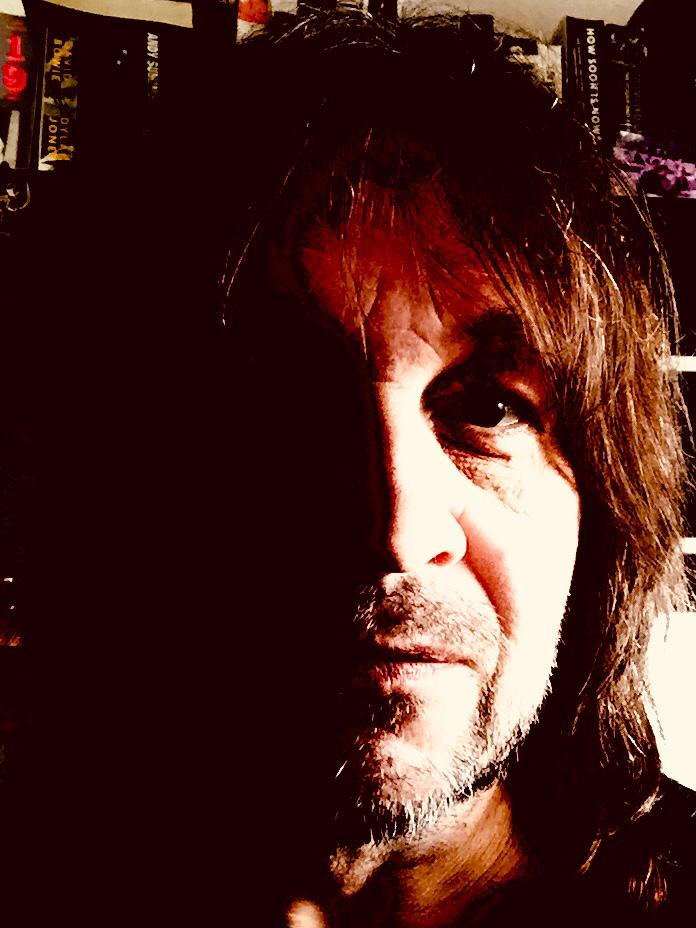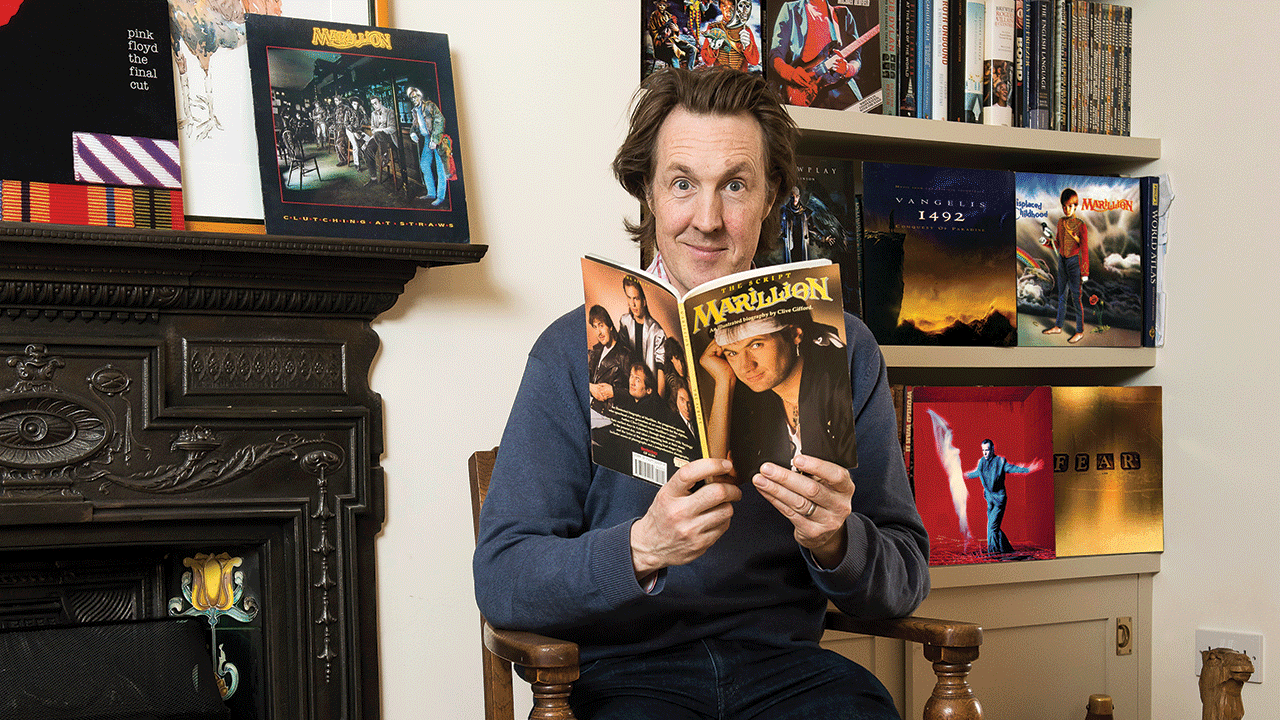“It could be more amazing than U2’s triumph in Las Vegas. I think you could even blow that out the water”: Can Youth persuade David Gilmour to stage a live show with The Orb?
Producer discusses his reboot of 2010 collaboration Metallic Spheres as Metallic Spheres In Colour

In 2010, producer Youth (aka Martin Glover of Killing Joke) connected David Gilmour with The Orb, and result was the album Metallic Spheres – which was recently rebooted as Metallic Spheres In Colour. Youth tells Prog how it all came about, and can’t hide his enthusiasm over the idea of a live show, complete with the Pink Floyd guitarist.
There’s an undeniable synchronicity at play in that The Orb and David Gilmour’s Metallic Spheres In Colour – the remix of their 2010 album Metallic Spheres – can be traced back to the activities of Scottish systems administrator Gary McKinnon, who in 2002 was accused by the US government of “committing the biggest military hack of all time.”
McKinnon pleaded harmless motives by claiming he was looking for information on UFOs. As he faced extradition, decades in jail and a potential $2m fine, Pink Floyd guitarist David Gilmour stepped up to the fundraising plate with the release of Chicago – Change The World, a cover of Graham Nash’s 1971 single Chicago, which in turn was later remixed by The Orb and producer Martin ‘Youth’ Glover with the full participation of Gilmour, to become Metallic Spheres. Now it’s been given a whole new lease of life.
“It’s a remix of a remix of a cover!” Youth says with a laugh, as he ponders the long road from the Nash cover to Metallic Spheres In Colour. Gilmour instigated the 2010 album after he and Youth – best-known as the bassist with pioneering post-punk band Killing Joke – had been working on another project.
“David suggested this Gary McKinnon remix,” Youth recalls, “and I just developed that into, ‘Well, let’s do some extra guitars,’ and then you’re in the same room working together. You take it from there, really. I thought that was more interesting than just doing a straightforward remix.”
It wasn’t the first time Youth had worked on such a project with an artist of such a huge global stature. “The Fireman project with Paul McCartney started when he asked me to do a remix,” says Youth. “I said, ‘Well, rather than do a remix, let me just sample sounds off your album, construct a new track, and maybe you do a couple of overdubs.’ And he was like, ‘Oh, has anyone done that before?’ I said, ‘No.’ He said, ‘Oh, that’s good! Let’s do that, then.’
“McCartney and Gilmour are artists, and they want to do things that are creative and edgy as well as appealing to their own sensibilities. Part of my job as a producer is to encourage the artist to do that.”
Sign up below to get the latest from Prog, plus exclusive special offers, direct to your inbox!
Given the cosmic nature of both The Orb’s succession of albums and Pink Floyd’s back catalogue, the biggest surprise with Metallic Spheres isn’t that the collaboration took place at all, but that it took so long to come to fruition – especially as The Orb’s Alex Paterson and Youth had been huge Pink Floyd fans since their schooldays together in the 70s. “We’ve wanted to work with David Gilmour since the beginning,” Youth says with a grin.
It all goes back to this Dionysian, bohemian underground current that has always been there, going back to the earliest shamanic rituals in caves
Consequently, Floyd’s influence had left an indelible mark on The Orb’s expansive music, while the sleeve of their Live 93 album gives a sly wink to the iconic artwork of Floyd’s Animals. But why has Metallic Spheres been given an overhaul now? “The original was much leaner and cleaner,” explains Youth, “but it was a bit Marmite for a lot of The Orb’s fans – some really loved it and some thought it was wasn’t really The Orb. It wasn’t exceptionally The Orb and it wasn’t exceptionally David Gilmour.
“It was more between the two. There was talk of remastering it. I said, ‘Why don’t we just remix it?’ I could get Alex Paterson and his bandmate Michael Rendall to apply their genius into re-envisioning it with a more classic Orb aesthetic. I think it’s benefited from becoming more of a definitive Orb record.”
The resulting album, Metallic Spheres In Colour, gains from a greater warmth and depth in sound that was absent from the gloss of its predecessor. Here, The Orb’s characteristic deep throbs, pulses and ambient washes coalesce more strongly with Gilmour’s beautifully cosmic guitar playing. Over the album’s two extended tracks – Seamless Solar Spheres Of Affection Mix and Seamlessly Martian Spheres Of Reflection Mix – the parameters of space rock, prog, dub, psychedelia, ambient and electronic music aren’t just pushed further into the outer reaches, they’re actually woven to create a whole new entity.
But what is it that binds these threads together? “That’s an interesting question,” ponders Youth. “It’s an attitude, I think, and a philosophy. I’ve done my own deductions of what that is. It’s the legacy and lineage of all of what I do and everything I’m involved with, whether it’s [sound system] Spiral Tribe, The Orb, David Gilmour and so on.
“It all goes back to this Dionysian, bohemian underground current that has always been there, going back to the earliest shamanic rituals in caves. All the way through history there has been this Dionysian element, and that’s what I’m attracted to. It’s Triple Goddess-orientated. It’s timeless, it’s transgressive and it’s shamanic in its essence.
“Its role is to rebalance and counterpoint the more established elements of society, and it facilitates a kind of primal energy we all have of emotional expression and celebration, and, to a greater or lesser degree, liberation and a certain amount of ecstatic losing yourself. It’s a rave aesthetic and sensibility without the 160 bpm kick drum. All of these scenes have a psychedelic element, which is the soul of shamanic trance states, and the intention is to gain transcendence.”
But surely the greatest way to gain transcendence would be to put all of this into a live setting? The prospect of seeing The Orb and David Gilmour bring their collaboration to the stage in tandem with the increase in audio-visual technology is a tantalising one, but is there any realistic possibility of such an event happening? “I want to believe there is,” says Youth, “and I hang on to the rainbow of that because I can just imagine it would be the most mind-blowing event.”
According to Youth, a number of possibilities concerning live performances have been mooted. One idea certainly runs close to the original cause of Gary McKinnon’s plight – staging an outdoor event close to Area 51 in the Nevada desert. Popular among UFOlogists and conspiracy theorists the world over, this is where – according to them – the United States Air Force holds evidence of extra-terrestrial life and interplanetary travel.
He has reached a degree of success where he really doesn’t have to do anything. But David does want to do this live
“I had this idea of building special quadrophonic sound system stacks and burying all the sub-bass into the sand, so that whole desert sand would be like a boom box,” says Youth. “Basically, there’d be four quad stacks, and then you’d have to go full Atmos and have 36 speakers and have things flying around, and you’d do it outside in the desert and you have, like, my most amazing visuals.
“That could still be the most amazing gig I could ever witness. I think that would be even more amazing than U2’s recent triumph in Las Vegas [their opening show at The Sphere], which was pretty mind-blowing. I think you could even blow that out the water by doing that.” Youth’s imagination isn’t limited to just that concept. “The other idea is to do a show outside the pyramids in Giza, which is a possibility as well,” he offers.
The prospect of these locations – as well as a mooted show at the Sierra Navada Observatory, close to Youth’s studio in Spain – are indeed tantalising. Each location would bring a unique visual characteristic of their own. But just how close are they to actually coming to fruition?
“Well, you’ve got to be realistic,” Youth sighs. “David Gilmour is going to be 80 in a couple of years’ time. And he’s reached a degree of success where he really doesn’t have to do anything. But David does want to do this live. He’s keen and I wouldn’t rule it out.”
Julian Marszalek is the former Reviews Editor of The Blues Magazine. He has written about music for Music365, Yahoo! Music, The Quietus, The Guardian, NME and Shindig! among many others. As the Deputy Online News Editor at Xfm he revealed exclusively that Nick Cave’s second novel was on the way. During his two-decade career, he’s interviewed the likes of Keith Richards, Jimmy Page and Ozzy Osbourne, and has been ranted at by John Lydon. He’s also in the select group of music journalists to have actually got on with Lou Reed. Marszalek taught music journalism at Middlesex University and co-ran the genre-fluid Stow Festival in Walthamstow for six years.

